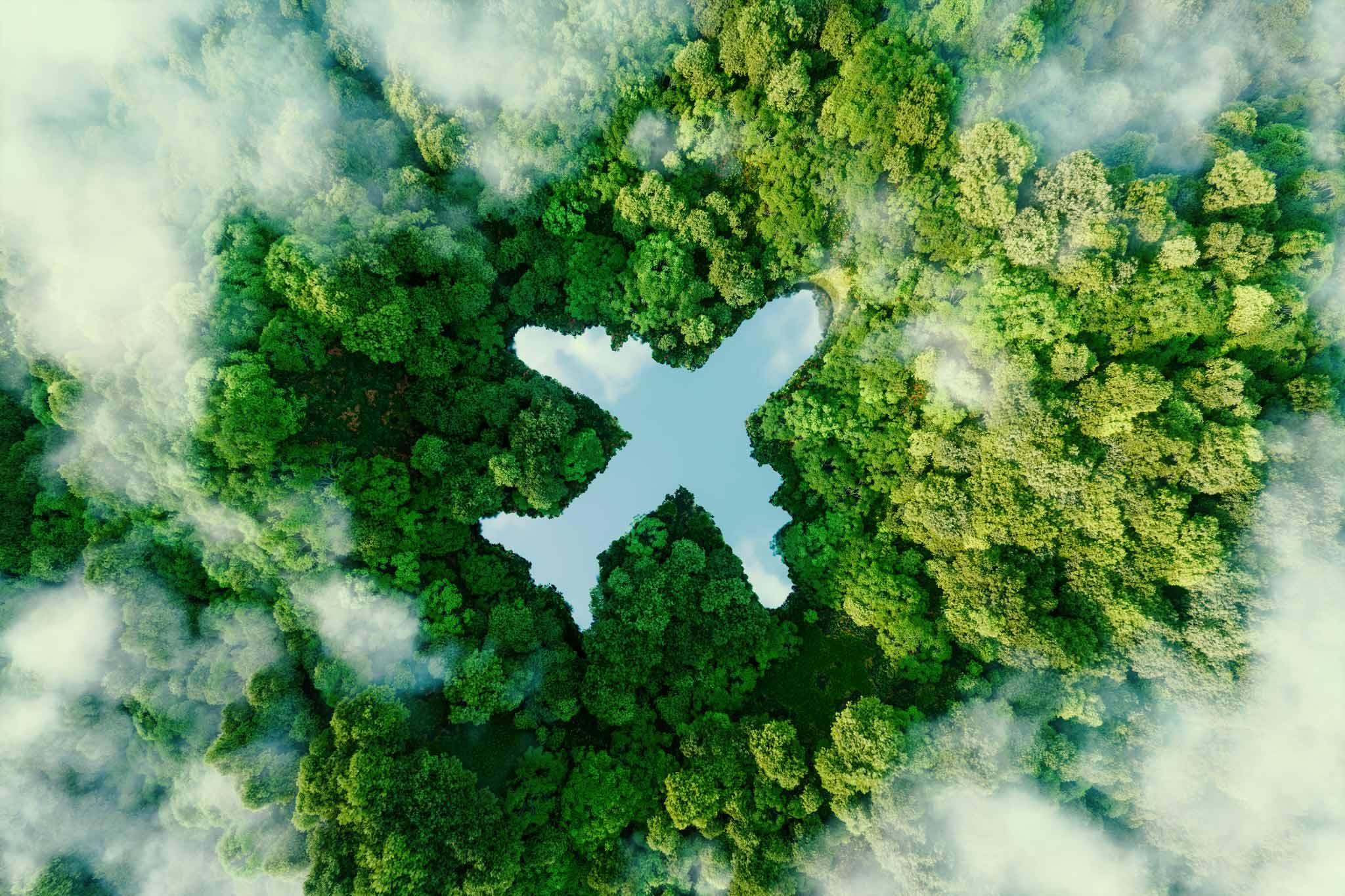IATA: Airline Industry is on the March to Net Zero
The International Air Transport Association (IATA) 77th Annual General Meeting approved a resolution for the global air transport industry to achieve net-zero carbon emissions by 2050. This commitment will align with the Paris Agreement goal for global warming not to exceed 1.5°C.
“The world’s airlines have taken a momentous decision to ensure that flying is sustainable. The post-Covid-19 re-connect will be on a clear path towards net zero. That will ensure the freedom of future generations to sustainably explore, learn, trade, build markets, appreciate cultures and connect with people the world over. With the collective efforts of the entire value chain and supportive government policies, aviation will achieve net zero emissions by 2050,” said Willie Walsh, IATA’s Director General.
Achieving net zero emissions will be a huge challenge. The aviation industry must progressively reduce its emissions while accommodating the growing demand of a world that is eager to fly. To be able to serve the needs of the ten billion people expected to fly in 2050, at least 1.8 gigatons of carbon must be abated in that year. Moreover, the net zero commitment implies that a cumulative total of 21.2 gigatons of carbon will be abated between now and 2050.
A key immediate enabler is the International Civil Aviation Organization’s (ICAO) Carbon Offsetting and Reduction Scheme for International Aviation (CORSIA). This will stabilise international emissions at 2019 levels in the short-to-medium term. Support for this was reaffirmed in today’s resolution.
Industry-wide Collective Efforts
The path from stabilising emissions to emissions reductions will require a collective effort. All industry stakeholders, including governments must each individually take responsibility to address the environmental impact of their policies, products, and activities. And they must work together to deliver sustainable connectivity and ultimately break aviation’s dependence on fossil fuels.
“Achieving sustainable global connectivity cannot be accomplished on the backs of airlines alone. All parts of the aviation industry must work together within a supportive government policy framework to deliver the massive changes that are needed, including an energy transition. That is no different than what we are seeing in other industries. Road transport sustainability efforts, for example, are not being advanced by drivers building electric vehicles. Governments are providing policies and financial incentives for infrastructure providers, manufacturers and car owners to be able to collectively make the changes needed for a sustainable future. The same should apply to aviation,” said Willie Walsh.
The Plan
The strategy is to abate as much CO₂ as possible from in-sector solutions such as sustainable aviation fuels, new aircraft technology, more efficient operations and infrastructure, and the development of new zero-emissions energy sources such as electric and hydrogen power. Any emissions that cannot be eliminated at source will be eliminated through out-of-sector options such as carbon capture and storage and credible offsetting schemes.
“We have a plan. The scale of the industry in 2050 will require the mitigation of 1.8 gigatons of carbon. A potential scenario is that 65 per cent of this will be abated through sustainable aviation fuels. We would expect new propulsion technology, such as hydrogen, to take care of another 13 per cent. And efficiency improvements will account for a further 3 per cent. The remainder could be dealt with through carbon capture and storage (11 per cent) and offsets (8 per cent). The actual split, and the trajectory to get there, will depend on what solutions are the most cost-effective at any particular time. Whatever the ultimate path to net zero will be, it is absolutely true that the only way to get there will be with the value chain and governments playing their role,” said Willie Walsh.
The resolution demands that all industry stakeholders commit to addressing the environmental impact of their policies, products, and activities with concrete actions and clear timelines, including:
- Fuel-producing companies bringing large scale, cost-competitive sustainable aviation fuels (SAF) to the market.
- Governments and air navigation service providers (ANSPs) eliminating inefficiencies in air traffic management and airspace infrastructure.
- Aircraft and engine manufacturers producing radically more efficient airframe and propulsion technologies; and
- Airport operators providing the needed infrastructure to supply SAF, at cost, and in a cost-effective manner.
The Role of Governments
The energy transition needed to achieve net zero must be supported by a holistic government policy framework focused on realising cost-effective solutions. This is particularly true in the area of SAF. Technology exists, but production incentives are needed to increase supply and lower costs.
The resolution calls on governments through ICAO to agree a long-term goal equivalent to the industry’s net zero by 2050 commitment. In line with the longstanding approach to managing aviation’s climate change impact, the resolution also called for governments to support CORSIA, coordinate policy measures and avoid a patchwork of regional, national, or local measures.
“Governments must be active partners in achieving net zero by 2050. As with all other successful energy transitions, government policies have set the course and blazed a trail towards success. The costs and investment risks are too high otherwise. The focus must be on reducing carbon. Limiting flying with retrograde and punitive taxes would stifle investment and could limit flying to the wealthy. And we have never seen an environment tax actually fund carbon-reducing activities. Incentives are the proven way forward. They solve the problem, create jobs and grow prosperity,” said Willie Walsh.
Milestones
The combination of measures needed to achieve net zero emissions for aviation by 2050 will evolve over the course of the commitment based on the most cost-efficient technology available at any particular point in time. A base case scenario as follows is the current focus:
2025With appropriate government policy support, SAF production is expected to reach 7.9 billion liters (2 per cent of total fuel requirement)2030SAF production is 23 billion liters (5.2 per cent of total fuel requirement). ANSPs have fully implemented the ICAO Aviation System Block Upgrades and regional programs such as the Single European Sky2035SAF production is 91 billion liters (17 per cent of total fuel requirement). Electric and/or hydrogen aircraft for the regional market (50–100 seats, 30–90 minute flights) become available2040SAF production is 229 billion liters (39 per cent of total fuel requirement). Hydrogen aircraft for the short-haul market (100–150 seats, 45–120 minute flights) become available.2045SAF production is 346 billion liters (54 per cent of total fuel requirement).2050SAF production hits 449 billion liters (65 per cent of total fuel requirement).
“SAF will fuel the majority of aviation’s global emissions mitigation in 2050. The recently announced US Grand challenge to increase the supply of SAF to 11 billion liters (3 billion gallons) by 2030 is a great example of the kinds of policies that will drive aviation sustainability. Similarly, the announcements from several big energy suppliers that they intend to produce billions of extra liters of SAF in the near term are welcome. But we cannot tolerate announcements with no follow-up. To be meaningful, fuel suppliers must be accountable for delivering SAF at cost competitive prices.
“The way forward for all means of carbon mitigation will be scrutinised. We will match commitments to achievements in reporting that makes it clear how we are progressing. Engaging with travelers, environmental NGOs and governments based on transparent reporting will ensure that our flightpath to net zero is fully understood,” said Willie Walsh.
Ambition5
“There will be those who say that we face impossible numbers and technical challenges. Aviation has a history of realising what was thought to be impossible – and doing so quickly. From the first commercial flight to the first commercial jet was about 35 years. And twenty years on we had the first jumbo jet. Sustainability is the challenge of our generation. And today we are launching a transition that is challenging. But in 30 years it is also within reach of human ingenuity, provided governments and the whole industry work together and hold each other accountable for delivery,” said Willie Walsh.
Download the resolution pdf or read more about the IATA Fly Net Zero vision.



